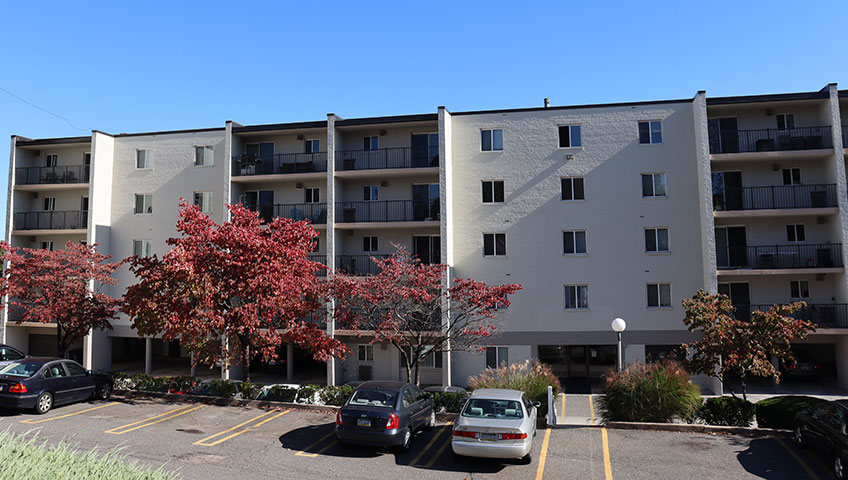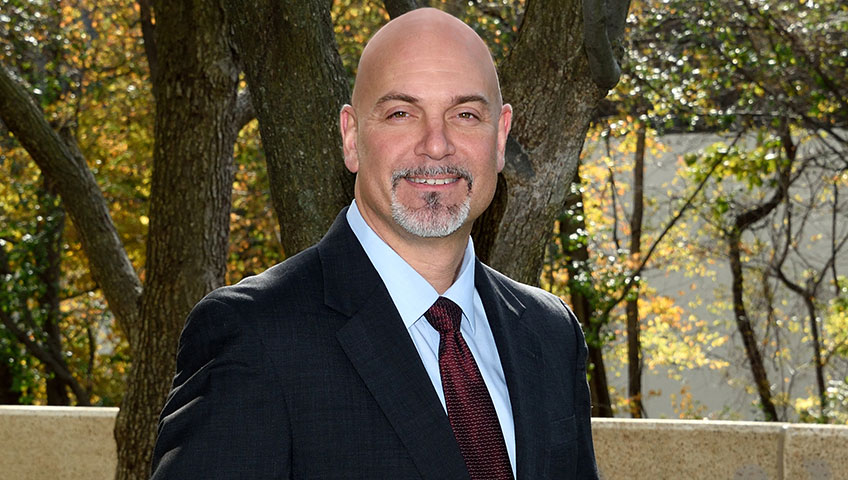Mar 11, 2020
Two years after OSHA’s ‘Walking and Working Surfaces & Fall Protection Systems’ regulation changes became effective, the party’s that are most affected by these rulings (building owners and property management companies) remain challenged on how to navigate what these changes mean specifically for their properties and on how to move towards compliance. While many building owners have been able to achieve compliance, many are still working towards that objective. The most common reason that many building owners and property management companies have not yet achieved 100% compliance is simple. As with most OSHA regulations, it is not simple to understand what it means and how exactly it applies to everyone’ unique situation. Then, to increase the possibility of confusion even further, unfortunately there is a lot of misinformation being given and received in the marketplace that has led some building owners and property managers to move down the wrong pathway towards compliance. Our SafeSite Advantage team has worked with our clients to provide awareness and education on these complicated rules and regulations, as well as support our clients in moving down the correct pathway towards compliance. During this time over the last couple of years, we have heard some very consistent questions, concerns, and insights provided by our clients. So, we thought it might be of benefit and service to all of our clients to have the opportunity to hear what those most popular questions and concerns have been, and what you need to consider as you think about each.
- In summary, what are the major requirements of all of the regulation changes that we need to be most concerned about as building owners and property managers? Has any of this changed over the last couple of years since it was effective?
First, OSHA has not changed any of the regulation changes that became effective in 2017. The most significant requirements that building owners must consider for their buildings in order to comply still include:
- Testing, Certifications, & Inspections – Each individual anchorage point that would be used for Rope Descent System on a building for any kind of service must be tested after it is installed. There is no grandfather clause, so if anchors have not been tested or do not have any documentation to that effect, they must be tested. After an anchorage has been tested, each anchorage must be certified that it can withstand a 5,000 load in any direction. The test data will help determine if the anchorage can be certified. This certification must occur no more than every 10 years, or as often as the qualified person completing the certification determines. In between periods of certification, each anchorage point must be inspected to ensure that the anchorage remains safe for use. Only a qualified professional engineer should be testing, certifying, or inspecting anchorages.
- Anchorage System Compliance – There must be an adequate amount of anchorages on a building that will allow for compliant use of Rope Descent Systems. So, it is not just required to test, certify, and inspect identified anchorages, but there must be enough of them for any hired contractor of the building owner/property management company to compliantly use the system to rig the building. This is the building owner’s responsibility, and often involves installing anchors on the building to supplement the building’s already existing identified, tested, certified, and inspected anchorages.
- Fall Protection – The building owner must provide a fall protection system for their employees, and contractors, to use. The building owner must also develop a fall protection plan that meets the requirements for OSHA 1910.28 for their building in all areas that a fall hazard exists. This includes the entire building roof footprint. Building owners must also formally train their employees on what is required to comply with those requirements and their building’s specific written plan.
- What is the deadline to be compliant? Did OSHA really give building owners less than a year to comply, and am I currently not compliant?
The initial OSHA deadline to comply with most requirements was November of 2017, which included ensuring each identified anchorage have been tested, certified, and inspected. This also included the requirement for the building owner to ensure there were enough anchorages to allow for compliant rigging of the building. However, during the summer of 2017, Valcourt worked with OSHA (including the group that wrote and published these rules) to give some reprieve to building owners on this very tight deadline. A memorandum was released by OSHA in November of 2017 allowing building owners to continue work on their buildings without being in complete compliance indefinitely. The most significant requirement to give building’s this allowance was that building owners must be continually working towards compliance and be able to demonstrate this if questioned by OSHA. There is no deadline or timeline that specifies when this allowance will end. It can be revoked by OSHA at any time. In summary, if you are a building owner and you are not compliant with all of the requirements of these regulations, then in order to have this type of work conducted compliantly on the building, you need to follow the requirement of the memorandum to immediately begin the process of reaching compliance and continually work towards that objective until it is complete.
- What is the recommended first step to work towards compliance, and OSHA’s memorandum?
Well, the easy answer is to ensure you are enrolled on our SafeSite Advantage Program. This program is designed to help navigate the requirements of OSHA and all industry consensus standards as it specifically applies to each building. The program includes an experienced third party professional engineering firm to complete one of OSHA’s requirements to have each anchorage on the building to be identified and inspected. The SafeSite Program Manager assigned to the building will also help the building owner understand the requirements of the building and provide all the required consultation and resources necessary to obtain and then manage the compliance requirements of each building.
- Why do I need so many anchors on my building?
Be careful of the consultation that you receive from outside contractors when answering the question of how many anchors are needed on a building to be compliant. There are a lot of new contractors that have now entered this space over the last couple of years, as they are seeking an opportunity to make money based on these OSHA regulation changes. But, their inexperience and drive to create an opportunity for themselves could leave a building owner in a very risky position. There is no set number of anchors required per building to be compliant. The demands of each building vary. There are a variety of factors that contribute to ensuring there are a correct amount of anchorages to allow for compliant rigging of a building. These requirements are not easy to determine and include the interpretation of requirements of multiple OSHA codes and existing standards. The most impactful requirements of these regulations and standards that determine how many anchorages should be included in a compliant building system include, but not limited to, proper rigging angles of attachment to independent anchors for a worker’s working and safety lines from the worker’s point of suspension on a building, not exceeding the potential for certain specified fall or swing hazards should there be a failure in the system, ensuring availability for independent anchorages for the safety line when completing a descent on a building, and maximum allowable anchorage spacing. There are many factors that work to determine the amount of anchors required per building that are referenced in various codes and standards, and how they apply to a building will vary depending on a variety of factors, including the general make up of the building itself.
- What are most building owners doing to achieve compliance?
First, if they are a client of ours, they are enrolling in our SafeSite Program to start the documented process of working towards compliance so that they can not only begin on their pathway towards compliance, but also to allow building services to continue without interruption in fear of OSHA citations or fines. Secondly, typically speaking, most building owners are ensuring their existing anchorages are properly identified, tested, certified, and inspected in the first year and pushing those costs through their operating expenses that are to be billed back in CAM charges to their tenants. Then, most building owners are using all of that information to properly budget for retrofitting their buildings with the required additional anchorages to ensure their system has a compliant amount of anchorages. This is usually completed in the second year. After this point, building owners typically remain on the SafeSite Program in order to have the Valcourt team manage the required annual inspections and documentation of all anchorages thereafter.
- I received 3 bids to install the additional anchorages needed for compliance at my building, and the prices were all over the place. How could this be if all bidders are using the same regulations and standards to determine what needs to be done at my building to be compliant?
There are quite a few reasons that a building owner may receive bids with wide ranging costs to retrofit their building with the proper amount of anchorages to allow for a compliant system at a building. While there are always reasons that one provider may be more expensive than another provider like in any industry, there are some very distinct reasons that bids for these services can drastically vary in cost that the building owner should be cautiously aware of. These include, but not limited to, installing lessor valued anchors, installing anchors that are quick to attach to a building (such as Adhesive Anchors), improper design of the anchor system that results in too few anchors being installed, low insurance limits, providing limited engineering during system design, shifting certain required engineering being provided back to the building owner to directly provide (ex – ensuring the structure will hold the required load of the anchor system being installed), use of sub-contractors, shifting liability through the use of sub-contractors, not using professional engineers for testing and certification, not using 3rd party qualified parties to complete testing and certifications, among many other such reasons.
All of these stated examples, and many more that are not listed, are reasons that a building owner should properly qualify the contractor that they chose. Each of those variables will drive the costs for a building owner down, but they may not be in the building owner’s best interest or desires. Valcourt has an anchorage installation division and would be happy to walk a building owner or property manager through this process, educate on how to properly qualify a bid, and to provide a proposal if one was desired.





